GAMEPLAY WALKTHROUGH
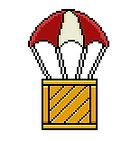
Project Duration
Role
1 Week
2D Artist/Animator
Software
Aseprite, Unity
Team Size
2









INTRODUCTION
Skyguard is a modern, stylized remake of Atari’s Missile Command, built in just one week as part of a rapid prototyping challenge. Players control a mobile missile tank tasked with defending two cities from waves of incoming attacks. The game blends fast-paced action with precision aiming, supported by a minimal yet intuitive control scheme using only the mouse.
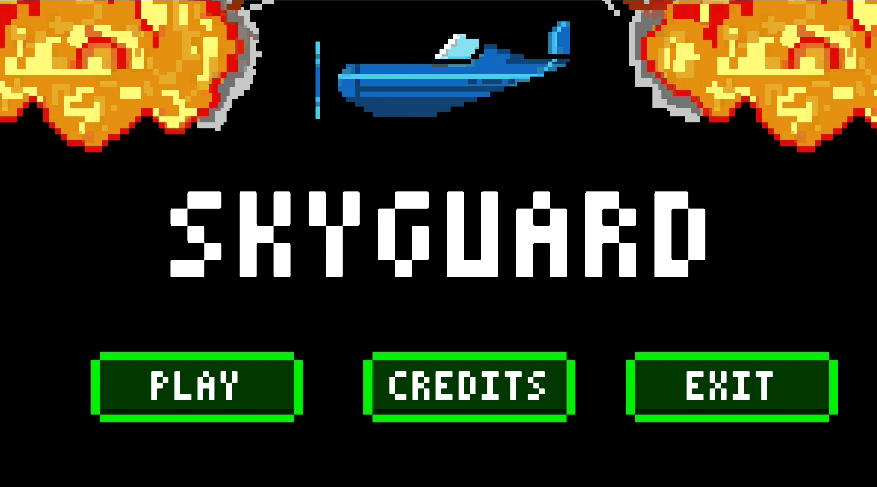
GAMEPLAY MECHANICS
1. Controls
Tank Movement: The player can move the tank horizontally by holding the "Mouse left click" and using the mouse cursor direction.
Aim and Shoot: The player can aim and shoot projectiles at incoming missiles using the "Mouse Left click".
2. Objectives
Protect the Cities: The main objective is to defend the city from waves of incoming missiles.
Survival: The player must survive as long as possible, with each wave increasing in difficulty.
Score: The player aims to achieve a high score by successfully shooting down missiles and preserving the city.
3. Bonuses
Supply Crates: Crates give you extra points and collecting them can benefit you get the highest score possible.
CONTRIBUTION
As the 2D Artist & Animator, I was responsible for shaping the entire visual and user experience:
1. Art
Designed all the game assets, including the tank, cities, missiles, and explosion effects, in a pixel-art style using Aseprite. This was my first time using the software, and I quickly picked it up during the development process. It was an enjoyable learning experience and a great opportunity to explore a new tool.
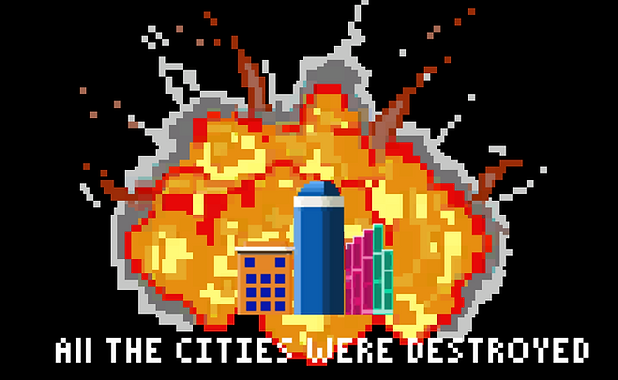
TANK - We wanted to set our version apart from the original Missile Command by giving the player a mobile unit. This led to the idea of a moving tank that launches missiles, adding a dynamic twist to the gameplay. I designed the tank to stand out visually against the warm orange background, using bold colours and clean shapes to ensure clarity and impact. The final result struck a great balance between functionality and visual appeal.
The design took inspiration from futuristic military tech, but with a simplified retro feel to stay true to the game's Atari roots.
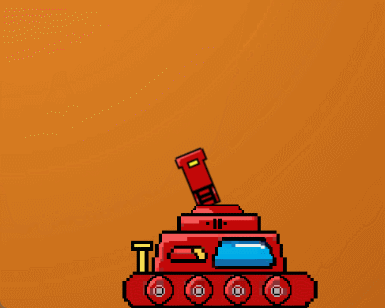

AIRCRAFT - Initially, the aircraft was designed to be an enemy unit, but as the gameplay evolved, we reimagined its purpose. Instead of being a threat, the aircraft became a supply crate dropper, introducing an optional objective for players to pursue. Collecting these crates rewarded bonus points, adding a satisfying layer of risk-versus-reward to the experience.
Designing the aircraft was by far the most fun and creatively fulfilling part of the process for me. I focused on giving it a distinct silhouette and movement pattern to make it instantly recognizable during intense gameplay. Using pixel art, I gave it smooth, readable animations and a subtle retro-futuristic look that matched the game’s overall style.
This change not only improved game pacing but also introduced a moment of surprise and reward amidst the chaos, encouraging players to stay alert and constantly adapt.
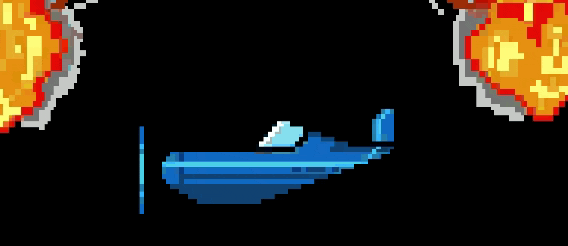















MISSILES/CRATE- The missiles in Skyguard play a dual role, they’re both your primary weapon and the main threat. This contrast made it essential to create a clear visual distinction between friendly and enemy projectiles. Initially, I had plans to design enemy missiles with a unique shape and behaviour, but given the one-week scope of this prototype, we had to adapt quickly. Instead, I used a colour-based approach to differentiate them—enemy missiles were styled with dark red and black tones, giving them an ominous, aggressive feel. In contrast, the player-fired missiles featured vibrant green and yellow colours, symbolizing energy, action, and safety.
Despite time constraints, this simple visual contrast worked effectively, helping players immediately identify which missiles to avoid and which ones they controlled. It added clarity during fast-paced gameplay without overwhelming the screen with too many unique shapes or animations.
As for the supply crates, we wanted to ensure they were easily recognizable as a positive, friendly element amidst the chaos. I designed them with a parachute, evoking the feel of an airdropped care package. This not only made them visually distinct but also suggested motion and urgency, encouraging players to grab them quickly for bonus points. The parachute was a small detail, but it added charm and context to the crates—players could clearly tell these were helpful drops, not threats.
Overall, these design choices were driven by readability, quick recognition, and a cohesive pixel-art aesthetic—all important considerations given the tight prototype deadline.
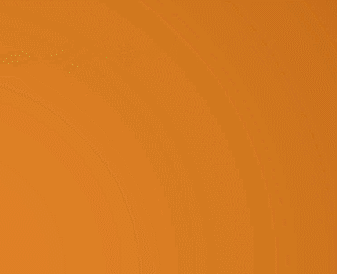
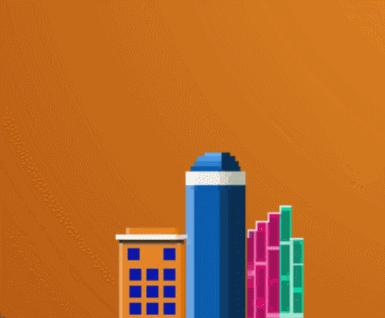
2. Animation
EXPLOSIONS - Working on the explosions in Skyguard was one of the most rewarding parts of the development process for me. It was my first deep dive into pixel animation, and through it, I learned a lot about how to create effective sprite sheets, carefully adjusting each frame with subtle differences to create the illusion of motion and impact. Using Aseprite made the process fun. It opened my eyes to the power of frame-by-frame animation in pixel art and how much emotion and energy can be conveyed with just a few pixels and smart colour usage.
For the visual style of the explosions, I experimented with a blend of yellows, oranges, reds, and browns to give them a fiery, punchy aesthetic. The moment when a missile connects and the explosion triggers feels incredibly satisfying. It gives players immediate visual feedback that reinforces the impact of their actions.
To further enhance visual clarity, I added a green hue variation for explosions when enemy missiles strike the cities. This not only communicated damage to the player but also helped distinguish friendly and enemy interactions during chaotic moments.
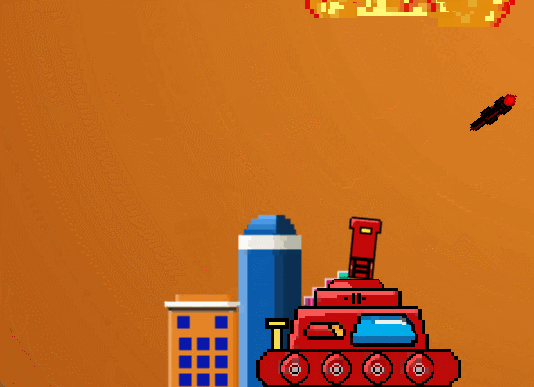
LEARNINGS
1. Introduction to Aseprite
Skyguard marked my first experience using Aseprite, and it was a truly eye-opening introduction to the world of pixel art. Within just a week, I was able to grasp the fundamentals of creating pixel-based assets, including characters and animations. I learned how to bring life to these assets through frame-by-frame animation, which helped me understand the principles of timing and pacing in pixel art. It was a fun challenge that significantly boosted my confidence in working with 2D art.
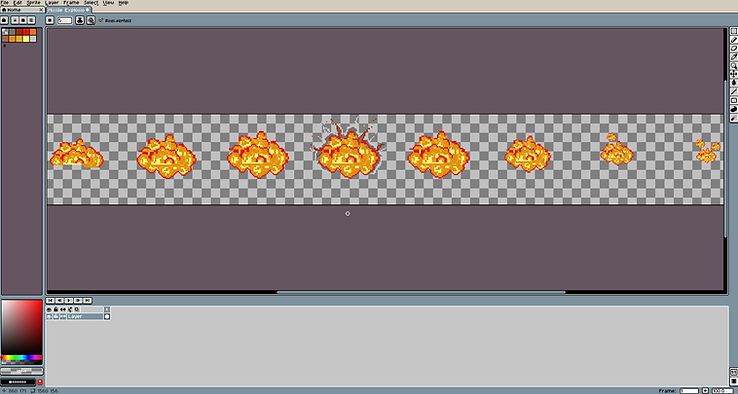
2. Sprite Sheets and Animation Integration
In addition to creating assets, I also learned how to export and organize sprite sheets properly and how to implement them efficiently within Unity. This included working with keyframes, setting up animations, and ensuring smooth transitions during gameplay. Understanding how to bridge the gap between art creation in Aseprite and functional animation in Unity was a crucial takeaway for me.
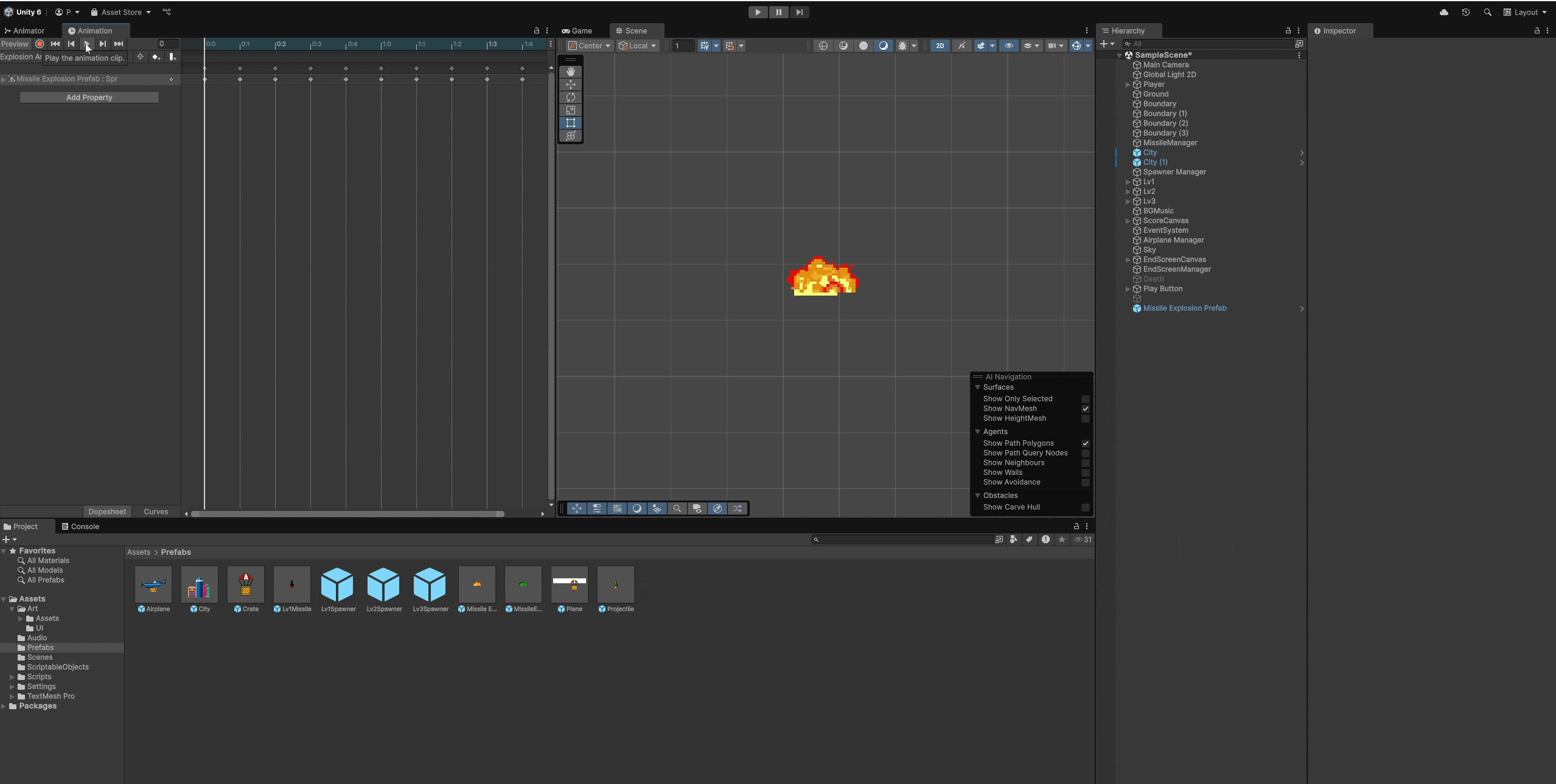
3. Handling Time Contraints and problem solving
Skyguard was developed as a one-week rapid prototype with a team of just two people. This time constraint taught me how to prioritize tasks, iterate quickly, and stay focused on core mechanics and visuals that mattered most. With limited time and resources, we often had to find quick and effective solutions—for example, adjusting hues to differentiate missile types instead of creating new assets from scratch. These kinds of creative constraints pushed me to think outside the box and taught me how to make the most of what we had.
Explore












